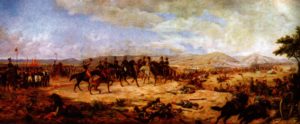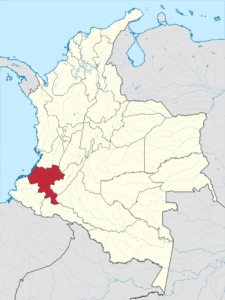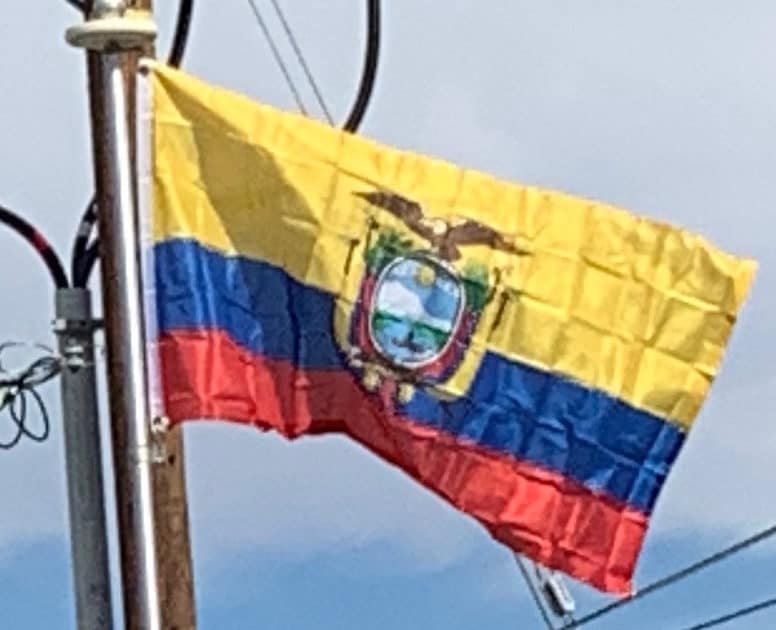
The war ended when a triumphant heavily outnumbered southern Gran Colombian army at Battle of Tarqui dated February 27, 1829, led by Antonio José de Sucre, defeated the Peruvian invasion force led by President La Mar. This defeat led to the signing of the Treaty of Guayaquil dated September 22, 1829, whereby Peru and its Congress recognized Gran Colombian rights over Tumbes, Jaen, and Maynas. Through protocolized meetings between representatives of Peru and Gran Colombia, the border was set as Tumbes river in the west and in the east the Maranon and Amazon rivers were to be followed toward Brazil as the most natural borders between them. However, what was pending was whether the new border around the Jaen region should follow the Chinchipe River or the Huancabamba River. According to the peace negotiations Peru agreed to return Guayaquil, Tumbez, and Jaén; despite this, Peru returned Guayaquil, but failed to return Tumbes and Jaén, alleging that it was not obligated to follow the agreements, since the Gran Colombia ceased to exist when it divided itself into three different nations – Ecuador, Colombia, and Venezuela.
The Dissolution of Gran Colombia:
The Central District of the Gran Colombia, known as Cundinamarca or New Granada (modern Colombia) with its capital in Bogota, did not recognize the separation of the Southern District of the Gran Colombia, with its capital in Quito, from the Gran Colombian federation on May 13, 1830. After Ecuador’s separation, the Department of Cauca voluntarily decided to unite itself with Ecuador due to instability in the central government of Bogota. The Venezuelan born President of Ecuador, the general Juan José Flores, with the approval of the Ecuadorian congress annexed the Department of Cauca on December 20, 1830, since the government of Cauca had called for union with the District of the South as far back as April 1830. Moreover, the Cauca region, throughout its long history, had very strong economic and cultural ties with the people of Ecuador. Also, the Cauca region, which included such cities as Pasto, Popayán, and Buenaventura, had always been dependent on the Presidencia or Audiencia of Quito.

Fruitless negotiations continued between the governments of Bogotá and Quito, where the government of Bogotá did not recognize the separation of Ecuador or that of Cauca from the Gran Colombia until war broke out in May 1832. In five months, New Granada defeated Ecuador due to the fact that the majority of the Ecuadorian Armed Forces were composed of rebellious angry unpaid veterans from Venezuela and Colombia that did not want to fight against their fellow countrymen. Seeing that his officers were rebelling, mutinying, and changing sides, President Flores had no option but to reluctantly make peace with New Granada. The Treaty of Pasto of 1832 was signed by which the Department of Cauca was turned over to New Granada (modern Colombia), the government of Bogotá recognized Ecuador as an independent country and the border was to follow the Ley de División Territorial de la República de Colombia (Law of the Division of Territory of the Gran Colombia) passed on June 25, 1824. This law set the border at the river Carchi and the eastern border that stretched to Brazil at the Caquetá river. Later, Ecuador contended that the Republic of Colombia, while reorganizing its government, unlawfully made its eastern border provisional and that Colombia extended its claims south to the Napo River because it said that the Government of Popayán extended its control all the way to the Napo River.
Struggle for Possession of the Amazon Basin:
When Ecuador seceded from the Gran Colombia, Peru decided not to follow the Treaty of Guayaquil of 1829 or the protocoled agreements made. Peru contested Ecuador’s claims with the newly discovered Real Cedula of 1802, by which Peru claims the King of Spain had transferred these lands from the Viceroyalty of New Granada to the Viceroyalty of Peru. During colonial times this was to halt the ever-expanding Portuguese settlements into Spanish domains, which were left vacant and in disorder after the expulsion of Jesuit missionaries from their bases along the Amazon Basin. Ecuador countered by labeling the Cedula of 1802 an ecclesiastical instrument, which had nothing to do with political borders. Peru began its de facto occupation of disputed Amazonian territories, after it signed a secret 1851 peace treaty in favor of Brazil. This treaty disregarded Spanish rights that were confirmed during colonial times by a Spanish-Portuguese treaty over the Amazon regarding territories held by illegal Portuguese settlers.
